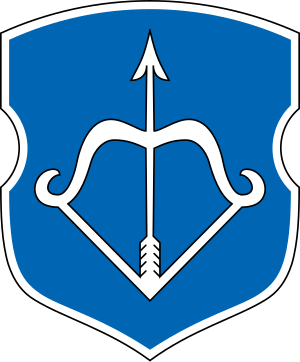
Brest Fortress (Belarusian: Брэсцкая крэпасць, Brestskaya krepasts' ; Russian: Брестская крепость, Brestskaya krepost' ; Polish: Twierdza brzeska), formerly known as Brest-Litovsk Fortress, is a 19th-century Russian fortress in Brest, Belarus. It is one of the most important Soviet World War II war monuments commemorating the Soviet resistance against the German invasion on June 22, 1941 (Operation Barbarossa). Following the war, in 1965 the title Hero-Fortress was given to the Fortress to commemorate the defenceof the frontier stronghold during the first weeks of the German-Soviet War. It was then part of the Byelorussian SSR. The title Hero-Fortress corresponds to the title Hero City, that was awarded to an eventual total of twelve Soviet cities.

Brest Millennium Monument (2009) - was designed by the Belarusian architect Alexei Andreyuk and sculptor Alexei Pavluchuk to commemorate the millennium ofBrest, Belarus. It was erected in 2009 at the intersection of Sovietskaya Street and Gogol Street in Brest. The project was financed by the state budget and public donations.
The monument presents a group of bronze statues. The angel of mercy with a cross is standing at the top of a granite column. 3 statues remember the remarkable historic personalities that are associated with Brest: Vladimir Vasilkovich, who put up a tower in the castle of the town in the 13th century, Vitovt the grand duke of Grand Duchy of Lithuania, Mikołaj "the Black" Radziwiłł in whose printing shop the first Belarusian book was printed, 3 more statues represent abstract images: warrior, mother, chronicler (who wrote apparently the Russian Primary Chronicle). The total height is 15.1 m, the height of the angel is 3.8 m, the height of the 6 statues is 3m. the diameter of the base is 8.6 m. In April 2011 a belt of high reliefs appeared around the monument. It depicts history-making episodes of Brest..
 Landscapes of Belarus, Berezovsky District, Brest region.
Landscapes of Belarus, Berezovsky District, Brest region.


Žádné komentáře:
Okomentovat